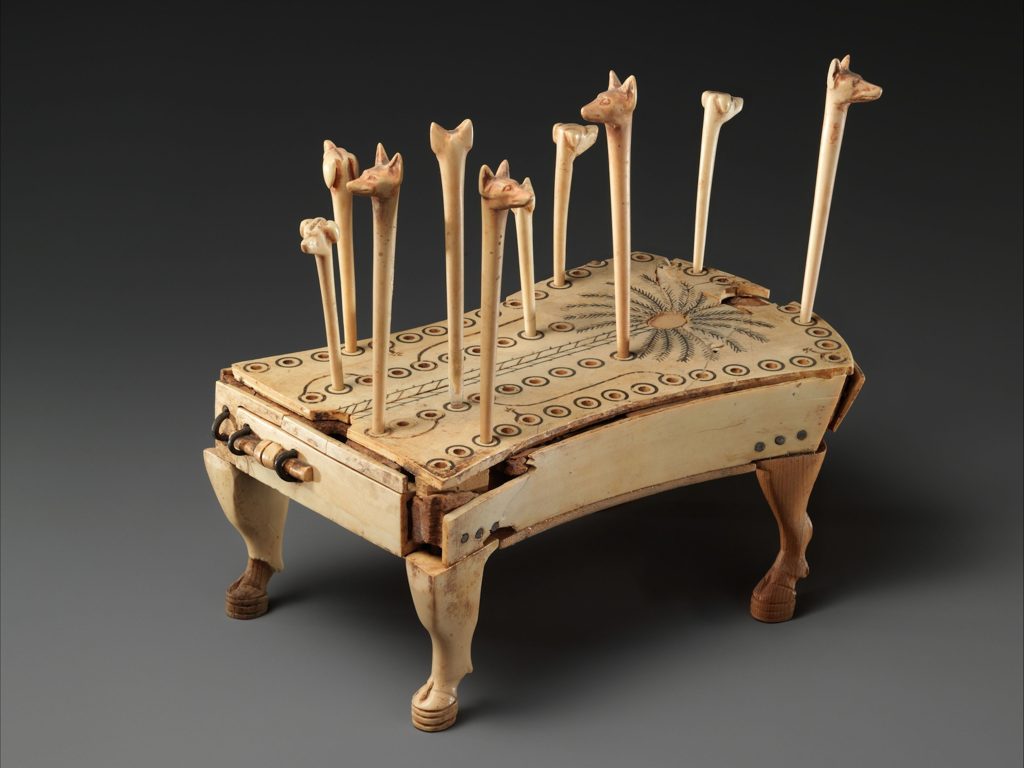
Hounds and Jackals is an Egyptian game, which came into existence in the Middle Kingdom, around the 9th Dynasty, circa 2135 – 1986 BCE. It is a racing game, in the same category as Senet, Aseb, and the Royal Game of Ur.
The game was originally discovered by William Mathew Flinders Petrie and published by him in 1890. Since then over 40 examples of the game have been found in Egypt, Israel, Syria, Iran, and around the Levant and Mediterranean.
The original name of the game is unknown. Petrie called The Game of 58 Holes, since the game board that he found contained two sets of 29 holes. later, when Howard Carter discovered the fanciest known copy of the game, he called it The Game of Hounds and Jackals, since the playing pieces had heads of dogs and jackals on them. A third, least common, common name for the game was Shen for the Egyptian hieroglyph which was written on some of the examples, around the big hole at the top of the game.
Rules
The original rules for Hounds and Jackals are unknown. There have been many reconstruction attempts by historians and archaeologists, but most of them make a boring game. The first set of rules was developed by a Russian game re-constructor Dmitriy Skiryuk (Дмитрий Скирюк) and originally published on his blog in three separate posts (1, 2, and in most detail 3), in Russian. The second set of rules, which is very different from Skiryuk’s, was published by a user Welsch Dragonfly (Donna Washburne) on Instructables.com.
On Game Strategy:
- Hounds and Jackals is mostly a game of chance and not strategy. However, some strategizing is possible.
- The throwing sticks have uneven probability for different scores, as compared to six-sided cubical dice, which makes them more frustrating and exciting at the same time.
- The most frequent dice score on throwing sticks is 2 (probability is 6/16).
- The next most frequent dice scores are 1 and 3 (probability is 4/16).
- The least frequent dice scores are 4 and 5 (probability is 1/16).
- Due to this uneven probability of scoring it is advantageous to the player to keep gaps between their pieces and trap holes by either 1 or 3 holes. Gaps of 4 or 5 are even better. However, gaps of 2 are more dangerous since the probability of scoring a 2 is highest and therefore the piece can easily fall into a trap and get moved back. The opposite applies if the trap hole will move the piece forward or if it is a Nefer hole. Then the player should prefer a gap of 2 and not a gap of 1 or 3 holes, and of course not a gap of 4 or 5 holes, which will give them even less of a chance of landing there.